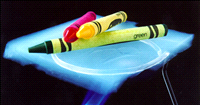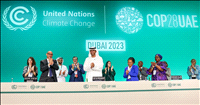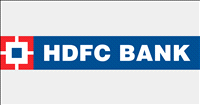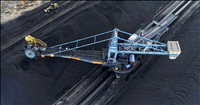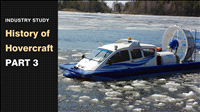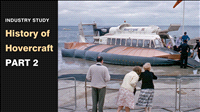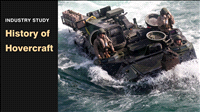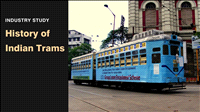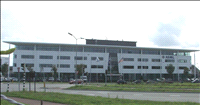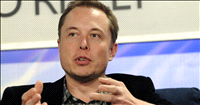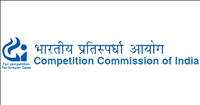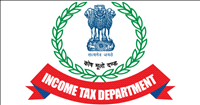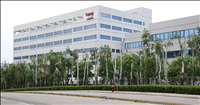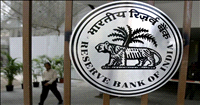The cost of success
By Philip Chacko | 05 Sep 2002
 Mumbai:
The people at Tata Engineering do not fancy the phrase cost
cutting, for no other reason than that they see it as inadequate,
even misleading in their context. Cost erosion is the
preferred terminology at Indias largest automotive company,
simply because it better captures the breakthrough exercise
that has shaved more than Rs 600 crore off Tata Engineerings
expenses over the last two years. Whats cut can grow back;
whats eroded is gone forever.
Mumbai:
The people at Tata Engineering do not fancy the phrase cost
cutting, for no other reason than that they see it as inadequate,
even misleading in their context. Cost erosion is the
preferred terminology at Indias largest automotive company,
simply because it better captures the breakthrough exercise
that has shaved more than Rs 600 crore off Tata Engineerings
expenses over the last two years. Whats cut can grow back;
whats eroded is gone forever.
 The
cost-erosion initiative, which began in April 2000, is
arguably the most important element in a remarkable revival
that has seen Tata Engineering recover from a loss of
Rs 500 crore in the year ended March 2001 to a profit
of Rs 28 crore in the first quarter of 2002-03. A quality
improvement programme based on the Six Sigma model, and
the development of new products are the other components
of this revival, but it is in cost reduction that the
gains have come thickest and fastest.
The
cost-erosion initiative, which began in April 2000, is
arguably the most important element in a remarkable revival
that has seen Tata Engineering recover from a loss of
Rs 500 crore in the year ended March 2001 to a profit
of Rs 28 crore in the first quarter of 2002-03. A quality
improvement programme based on the Six Sigma model, and
the development of new products are the other components
of this revival, but it is in cost reduction that the
gains have come thickest and fastest.
Consider the figures: Rs 296 crore in 2000-01 and Rs 332 crore in 2001-02. Thats cost erosion and its big.
Tata Engineerings earlier efforts to control costs resulted in small benefits, largely limited to the cost of materials. These benefits were cancelled out by inflationary price increases and expenses incurred on adding new features to vehicles or otherwise improving them. And the results from the companys three operation centres, Pune, Jamshedpur and Lucknow, were never uniform. There was no method to secure the gains of any cost-cutting exercise.
 This
did not matter too much then. The good times were rolling
and Tata Engineering made the best of the situation. From
1993 to 1997 the company grew 30 per cent a year. Revenues
sped from Rs 2,500 crore to over Rs 10,000 crore and the
operating margin soared to 16 per cent. The country was
booming, the economy was booming, the company was booming,
recalls Praveen P Kadle, executive director (finance and
corporate affairs). We were in a sellers market.
This
did not matter too much then. The good times were rolling
and Tata Engineering made the best of the situation. From
1993 to 1997 the company grew 30 per cent a year. Revenues
sped from Rs 2,500 crore to over Rs 10,000 crore and the
operating margin soared to 16 per cent. The country was
booming, the economy was booming, the company was booming,
recalls Praveen P Kadle, executive director (finance and
corporate affairs). We were in a sellers market.
Then came the collapse. It wasnt any one factor that fuelled Tata Engineerings fall. The market for commercial vehicles, the mainstay of the companys business, crumbled by almost 45 per cent at about the time Tata Engineering was spending more than Rs 1,300 crore in expanding capacities in this segment and improving its utility vehicles. The Indica project, up and running by this time, squeezed a further Rs 1,700 crore from the kitty.
Revenues caved in as a consequence, sinking to Rs 6,637 crore in March 1999, but Tata Engineerings troubles were far from over. The cost of complying with new emission norms and the increasing weight of competition added to the pressure on the companys operating margin, which dropped to a low of 7 per cent in March 2001. For the first time the market, rather than Tata Engineering, was determining the prices of our products, says Kadle.
Given the depressed market conditions and no revenue growth, the only way we could reduce our losses significantly and return to profitability was by reducing costs, he adds. We were forced to look beyond the 1 to 2 per cent kind of cost reduction. What we needed was out-of-the-box thinking. And thats what Tata Engineering got.
 Prakash
M Telang, senior vice president (manufacturing), was designated
the cost-erosion champion and put in charge of the entire
initiative. Four specific areas were identified:
Prakash
M Telang, senior vice president (manufacturing), was designated
the cost-erosion champion and put in charge of the entire
initiative. Four specific areas were identified:
- direct material costs (which constitute roughly 65 per cent of all costs);
- variable conversion costs (power, fuel, water, tools, etc);
- fixed costs (labour, marketing, corporate expenses, plant operations, research and development);
- financial restructuring (working capital, debt restructuring, balance sheet, etc).
Three-tiered teams members, leaders and champions were set up at the plant level to implement, drive and monitor the exercise across the organisation. Their task began with spreading the cost-reduction message, emphasising its importance to bringing the company back to good health, and defining the methods to accomplish it. The companys union was co-opted to communicate the programme and the house journal did the same.
Everybody had a cost-erosion target built into his area of work, says Telang, and we saw a cascading effect take hold.
The companys quality improvement project and its cost-reduction exercise have run concurrently, and each has helped the other. For one, its people understood that cutting costs did not mean cutting corners. The same teams and the same people were involved in both, so they were wearing these two hats simultaneously. This led to many win-win situations.
An illustration of this was what happened when Tata Engineering made major changes in some of its technologies. We were using copper-brass radiators when a new technology allowed us to use aluminium radiators, which give much better performance. So the quality of the vehicle improved, and since aluminium is much cheaper than copper and brass, the costs went down.
The big positive of the cost-erosion initiative goes beyond the statistics of money saved. The crisis unified the company like never before. We have emerged from this as a much leaner and better organisation.
What the exercise has done is institutionalise certain methods. Our systems are now good enough to prevent any cost increases, any regression from what we have achieved. Its not just one person; the whole organisation is in on it, so we can only go forward from here.
Cost reduction is going to be a permanent feature of Tata Engineerings agenda for the future, but the problem here is that the going gets tougher on this score with every passing month, because finding new costs to eliminate becomes ever more difficult.
Meanwhile, there are other things to consider: complexity management (essentially, making fewer variants of a particular product range); putting a comprehensive testing system in place; increasing the scope for outsourcing; and giving e-procurement a more conspicuous role in the order of priorities, with projected savings of Rs 100 crore on online purchases of Rs 1,500 crore over the next three years.
With operating margins in its flagship commercial vehicle operations now up at about 13 per cent, Tata Engineering can afford to breathe easy. Where two years back it looked dark as tar, the future now promises the rewards of a war that seems well and truly won.
Courtesy: www.tata.com
This is the second part of the article on the turnaround at Tata Engineering. The first, , focuses on the companys quality improvement programme
